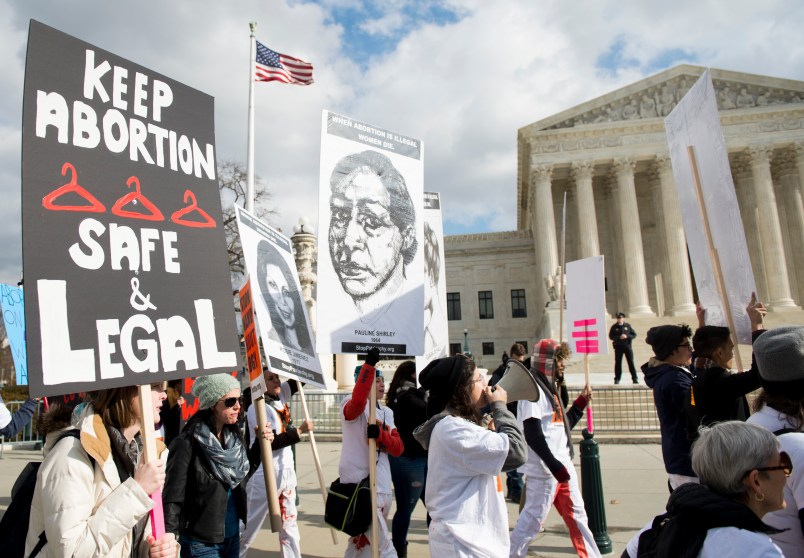In a few weeks a surgeon is going to slice so deep into my right arm that the muscle, bone and tendon will be exposed. Then that doctor will take a tendon from a dead body and place it between my radius and ulna bones, anchor it into the bones with what look like large plastic staples, and sew up the gash.
That sounds incredibly gruesome, but it’s also essential for my health.
Sure, there were other options, but they were even more radical and grisly and included phrases like “wrist prosthesis” and “one-bone forearm.” My doctor chose this option because in her opinion it is the best one available. And because my doctor spent four years in medical school and several more years in residency and fellowship, and now treats people like me as a routine part of her job, I trust her opinion.
So if a politician or organization decided that this particular form of wrist surgery was just too disgusting to be tolerated and tried to ban it, I’d be pretty upset. And if they insisted that despite having no medical training of their own and no real clue as to why I or any other patient needed that kind of surgery, they still wanted it banned because it sounds barbaric to attach a cadaver tendon to another person’s bones, I’d be stunned at their arrogance.
But this is pretty much the case in Kansas and Oklahoma, which recently banned dilation and evacuation, otherwise known as the most common form of second-trimester abortions. (Both states do allow an exemption if the woman’s life is in danger or her health is at serious risk.) Four decades of studies and evidence have made it clear that D&E is the most common for a reason—it’s the safest and least traumatic method available. So why are doctors in Kansas and Oklahoma now being told, under threat of both civil and criminal penalty, that they must stop giving their patients the safest care available?
Here’s how a D&E is performed, in the most basic and accurate terms: a woman’s cervix is dilated. Then suction and medical instruments are used to remove the fetus and fetal tissue.
Here’s how a D&E is performed, according to anti-choice activists: a fetus is extracted from a woman’s uterus! It might not all be extracted at once! So we’re going to make up the phrase “dismemberment abortion” and insist that it must be banned!
“Dismemberment abortion” is not a medical term and doesn’t describe an abortion procedure. But it sounds gross and unpleasant, so therefore an incredibly safe medical procedure with forty years of documented efficacy is demonized.
Wait, no—not the procedure itself, just the procedure when it’s used in abortion care. D&E is also used in miscarriage management, because when a woman has a miscarriage it’s very important to make sure that all fetal tissue has been removed from her uterus. But no one’s demanding that a woman suffering a miscarriage be denied a D&E…at least, not yet.
During the recent floor debate in Oklahoma, Rep. Pam Peterson, who sponsored her state’s ban, talked about the importance of words. “Words mean something, we sanitize words…The Nazis were really efficient at that. The Final Solution was Auschwitz, and it didn’t really describe what was going on.”
Yes, words mean something. For example, Rep. Peterson’s decision to mention the Holocaust when talking about banning an abortion procedure just bears out Elie Wiesel’s observation that those that “relate [abortion] to the Holocaust prove that they do not know what the Holocaust was.”
The anti-choice movement’s concerted effort to make the medically inaccurate term “partial-birth abortion” part of the vernacular likely influenced the outcome of Gonzales v. Carhart, the 2007 Supreme Court decision that banned a safe and effective abortion procedure. But another safe and effective medical procedure should not be likewise outlawed because those who don’t like the outcome of that procedure are describing it with inaccurate and manipulative words.
Medical procedures are unpleasant, from extracting wisdom teeth to putting a dislocated joint back in its socket to wiring a broken jaw shut. You know what’s really easy to describe in gory terms? Childbirth. There’s tearing and bleeding, and stitching up parts of a woman’s anatomy that, by all rights, should never have a needle near them. Delivering a child might involve slicing through a woman’s abdominal muscle, and it definitely involves bleeding and pain that doesn’t automatically stop once labor’s over. It’s so easy to describe childbirth in graphic, disgusting, skin-crawling terms. It’s so easy to describe any medical procedure this way. It’s also easy to describe any medical procedure in simple and precise terms, devoid of emotion and bias.
And that’s how they should be discussed, at least in politics, legal cases, and exam rooms. Doctors must be allowed to put their patients’ health and well-being ahead of everything else, including ideological politicians and self-righteous activists. And that’s why the Kansas and Oklahoma travesties should concern anyone who wants their doctor to be able to perform medical procedures that science and research deem essential, and not have them interfered with, much less outlawed, because someone thinks they sound unpleasant.
This isn’t just about abortion. It’s about allowing qualified physicians to give their patients the best care possible, and it’s about protecting our power to take care of our own health and trust medicine and our own judgment over prejudice and fear.
Sarah Erdreich is the author of Generation Roe: Inside the Future of the Pro-Choice Movement. She lives with her family in Washington, D.C.










Agree. Besides, I would never judge another’s desperation.
What about reproductive choices for women? In Michigan a young woman got pregnant and had her baby in the bathroom at work. She then put the baby in a plastic bag and in her backpack. Then she took the backpack to her desk and put it in a drawer. 911 was called after others discovered blood in the bathroom. My point is, did she have the option of birth control? Why was she so desperate? Living with her parents could be part of it. I’m not pushing abortion, but if women can’t get birth control easily and they are desperate, what are their choices?
Beautifully put, Ms. Erdreich! Abortion is just another medical “procedure” and the only people who should have any input are the woman and her physician. End. Of. Story. Except for the bluenoses and god-botherers who think they have the right to intrude on another person’s medical decisions. Please stop the bullshit, and stop telling women they have no agency over their own bodies. To all the men in the “pro-life” movement; I promise, YOU will never, ever have to suffer through this operation. Why are you concerned again?
Abortion is NOT SURGERY…Utter claptrap…from zealots deniers…
These idiots have had intellectual lobotomies! Fear mongering and lies is all they have.
Disgustiing…they, wing nuts, are gruesome gormless bits of wasted flesh!
An abortion is less risky than a colonoscopy if done by qualified physician.
…except there may be colonoscopy complications for those whose heads are permanently stuck in their hindquarters…